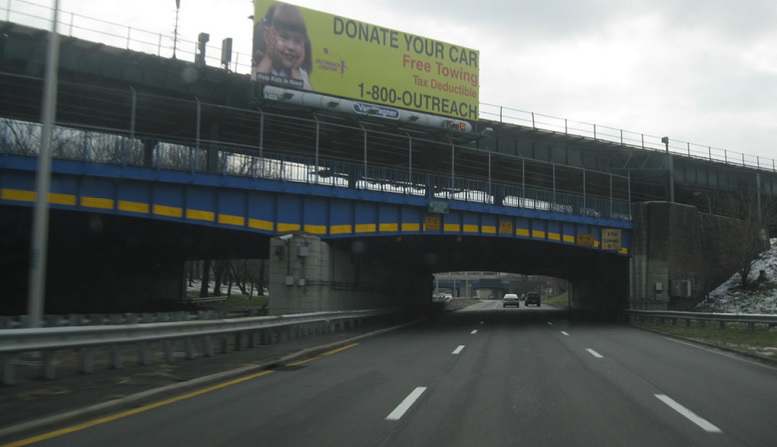The day after a car was hit by a Metro North train last week, Governor Cuomo renewed his call for more safety measures at railroad crossings. That call to action marked the second time in a week that accommodating illegal driver behavior became a top priority in New York. Earlier in the week, the New York City Department of Transportation announced that it will raise the Westchester Avenue overpass at the Hutchinson River Parkway to at least 12 feet 6 inches, in part to stop the drivers of large trucks (which aren’t supposed to be using the Parkway in the first place) from crashing into the overpass.
It is illegal to drive onto railroad tracks, stop on railroad crossings, or go around railroad crossing gates. The crash that happened this week, as well as the two Governor Cuomo cited when he announced a push for safer railroad crossings on Long Island involved drivers stopping on the tracks or driving around the gates. If drivers didn’t insist on breaking the law, increased safety measures at railroad crossings wouldn’t be an issue.
As for trucks on parkways, the New York City Traffic Rule §4-14 says — and this handy and clear NYC DOT document clearly demonstrates — that trucks are not allowed on parkways, including the Hutchinson River Parkway where they are illegally crashing into the Westchester Avenue overpass. Again, if drivers of large trucks could manage to adhere to the law, this wouldn’t be a problem.
This illogical misallocation of resources and attention doesn’t stop at the state line. Across the Hudson, New Jersey Assemblyman Declan O’Scanlon is once again talking about increasing the maximum speed limits on New Jersey highways to accomodate drivers who are already breaking the law.
This rush to change the rules and the roads to make way for illegal driver behavior isn’t just indefensible; it’s also pervasive. The “defend driving at all costs” mentality is all around us:
- Media outlets often describe crashes as “accidents,” even in instances of drunk, drugged and distracted driving.
- “Losing control” of a 4,000 pound machine happens all the time.
- The death toll brought about by cars — 33,000 in an average year — would be a national crisis in almost any other context.
- Speed camera enforcement programs are suddenly cancelled because drivers feel it’s their right to speed in school zones, and elected officials can’t take the heat.
Meanwhile, safer, more environmentally- and health-friendly alternatives to driving like walking and biking, continue to be met with skepticism, or even contempt.
- Commentators pretend distracted walking is as dangerous as distracted driving.
- Feature-length articles are published about bicyclists who kill pedestrians, while drivers who kill go unmentioned — as if their vehicles acted independently.
- Safe routes for cyclists and pedestrians disappear during construction.
- Attempts to build bike infrastructure met with opposition from vocal minority — which often grabs the headlines.
This approach to policy goes beyond false equivalence, to a point where the realities of safety and risk are completely distorted. Motor vehicles are a part of everyday life, but we can no longer afford to explain away and apologize for their negative impacts.


Couldn’t agree more with this. It feels like we as a mostly-driving society feel the constant need to rationalize and forgive people who do illegal things in their car because we want to be forgiven for the mistakes we will inevitably make in our cars. We pretend to be such a law and order-based society until it comes to being responsible for our personal actions.